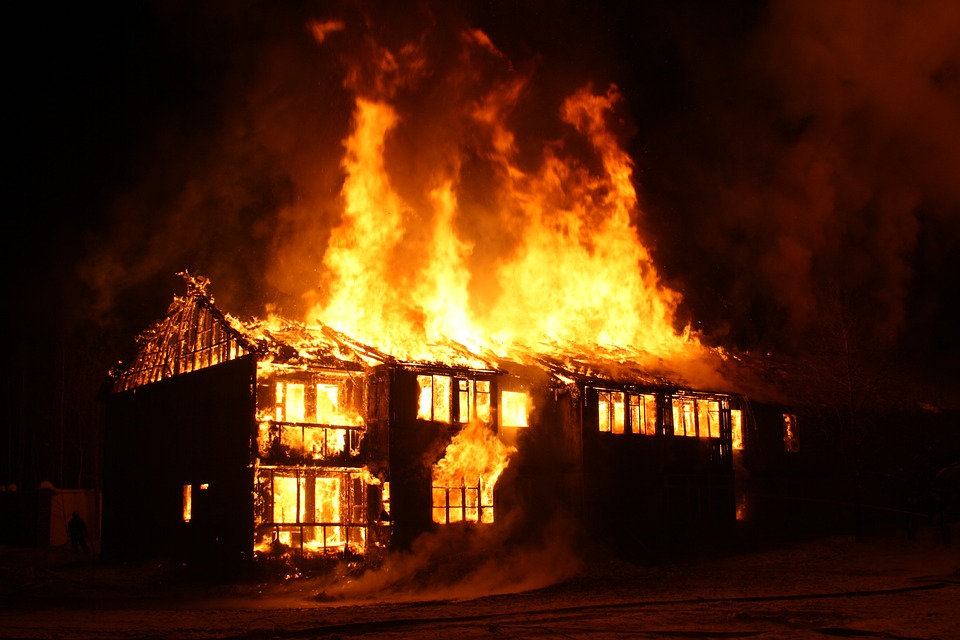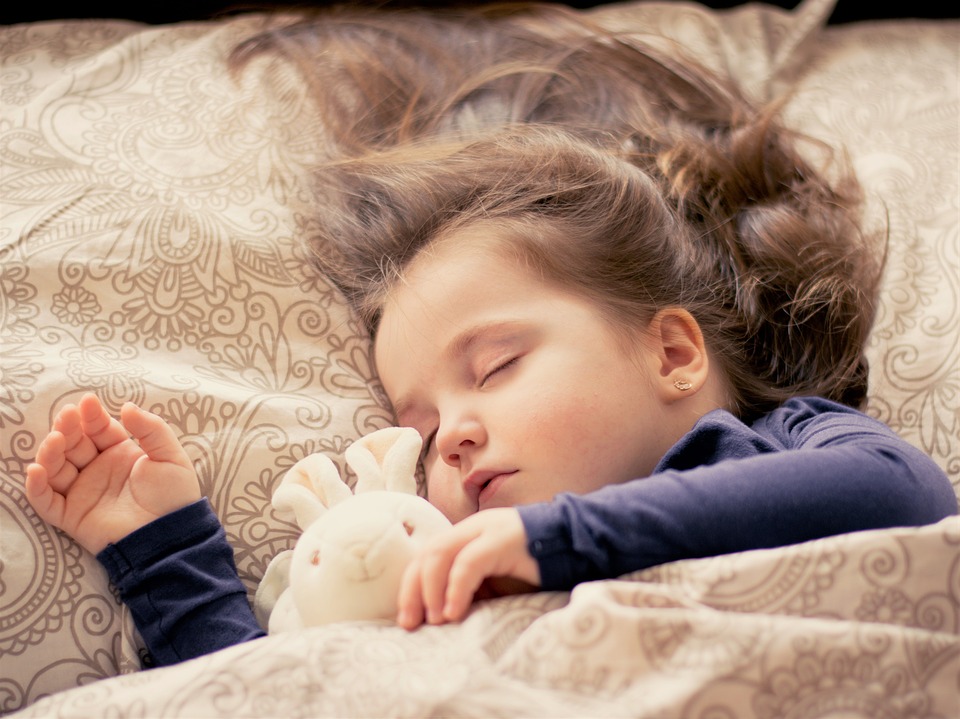When it comes to fire safety, the biggest thing to understand is that every second counts. We’ve previously discussed fire requirements for homes as well as where these laws and codes come from. In addition to these concerns, however, we have many customers ask us for general fire safety tips. Of course, making sure your home has smoke alarms where required — and occasionally even in recommended locations that aren’t required — is a major step in the right direction.
However, proactive fire safety requires creating and rehearsing a practical and simple escape plan. It also involves having a general idea of how to improve your chances of escaping a building during a fire. Knowing where to go to escape, as well as when to stay put, is also extremely important. Here are five of the most important pieces of advice we give to customers regarding fire safety.
Know the Best Methods for Escaping a Fire

Newer houses burn down much more quickly than most homeowners realize, so knowing what to do during the first few seconds after hearing a smoke alarm is key.
The first few seconds after hearing a fire alarm are crucial. Newer homes can burn down in fewer than five minutes, as opposed to 15-20 minutes for older homes. Therefore, it is very important that both you and your family know what to do after hearing a smoke alarm. Immediately after waking up to the sound of an alarm, you should roll out of bed. Of course it is human nature to sit straight up. Heat rises, so smoke fills a room from the top down. Sitting up can put your head above the smoke and allow smoke to fill your lungs when you inhale. Therefore it is important to practice this step during your family’s fire drills.
At this point, feel along the door with the back of your hand to see if it feels warm. The back of your hand has more sensitive, thinner skin than your palm. If the door is not hot, see if the doorknob is warm to the touch. If not, attempt to stay low and proceed out the door to the nearest exit. However, if the door or doorknob is hot, you should stay in the room rather than opening the door and giving oxygen to the fire outside the room. Assuming you are not on the first story (in which case you should simply climb out a window) make the room as fire-proof as possible. If you have access to a bathroom, put damp towels underneath the door. If you do not, use sheets and blankets. Cover vents and any airways into the room as well.
If you have a phone in the room, make sure to call 911. Do not call the fire department first. That number will generally instruct you to call 911 in the case of an emergency once the call gets through. Once this is done, get to a window and try to get a neighbor’s attention if possible for help. If you are on the phone with 911 at the time, let them know of your location in relation to the rest of the house. If you get to the point where you may need to jump from a second story, drop your mattresses and pillows below you to help break your fall.
Practice Makes Perfect
Discussing how to escape a house in the event of a fire is one thing. In order to prepare families to enact this plan in the event of an actual emergency, the plan must be practiced until it is perfected. The first instinct for a child in a fire is to attempt to wake the parents. The time this takes can often be the difference between getting out of the house safely and getting trapped inside. Everyone in a household should know what to do from the second the alarm sounds until the family is together at an assigned meeting place (often the mailbox or a trusted neighbor’s home). Children should also memorize different escape routes. The NFPA has some great resources for family fire safety, including this grid that you can use with children to map out fire escape routes.
Using positive reinforcement for completing these drills can work wonders. Our company’s owner, George Condon, discusses giving candy or a small prize to children upon successful completion of a fire drill. Rewarding children with a candy bar or other small prize can go a long way. As George explains, “Now the children have the positive thought of a prize waiting for them when the alarm goes off. If a smoke alarm goes off in the middle of the night, they’ll know to run to the designated meeting area through positive reinforcement rather than fear.” Practice makes perfect, and practicing with an incentive children can look forward to truly drills good habits into place.
Don’t Assume That Any Alarm is False

Knowing where the nearest exit is, and using it if you hear a smoke alarm in a public building, are very important fire safety measures.
Do you remember all of the fire alarm drills (both intentional and created by students) you had in school? How many people acted frightened during those drills? The non-panicked nature of these drills is helpful for students. They instill good practices and improve the chance that students will remain calm and remember the escape plan during an actual emergency. However, countless fire drills also instills something else into many peoples’ heads: many fire alarms in public places are either accidents or pranks. So many intentional and false alarms make it hard to take any alarms seriously. This is especially true in public places where anybody can activate a pull station.
The best advice we can give is to treat every alarm as if it is real. Always take note of where the nearest exit is in a public building. In the event of a smoke alarm, use the exit. If you leave a building due to a false alarm, you won’t lose anything when you find out there was no fire. On the other hand, people have been injured and even killed in fires where victims failed to take the first alarms seriously. You can find several examples of tragedies that could have been avoided, such as this apartment complex fire in Toronto, as reported by CBC news. Knowing how to best escape a fire does very little good if you fail to treat fire alarms as potential life-threatening situations.
Install Smoke Alarms in Every Bedroom
Depending on the year your house was built, you may or may not be required to have smoke alarms inside every bedroom. However, this is a basic safety step that must not be ignored. When a fire starts inside of a bedroom, the hallway alarm does not immediately pick up the smoke. An alarm inside the bedroom will sound much more quickly and allow you a greater chance to escape. For this reason, houses built in 1997 or later are required to have smoke alarms inside every bedroom. If you live in an older house and don’t have this equipment, adding these alarms is a simple way to increase fire safety that can make a big difference. This can be especially helpful with children, who can be harder to wake than adults. In fact, this concept ties right into our next fire safety tip.
Make Sure Your Alarms Will Wake Your Children Up

Multiple studies have shown that children often sleep through fire alarms. Seeing if your alarms will wake your children is a major step in family fire safety.
If you have children, installing these alarms becomes even more important. Citing a study by the University of Dundee in the U.K., BBC News has recently reported that it is not uncommon for 80% of children between the ages of 2 and 13 to sleep through smoke alarms. The authors of the study suggest a voice notification when alarms go off rather than the standard smoke alarm. If you think this could be an issue, try a fire drill while children are sleeping. See how long it takes for the alarms to wake children up. If children do not wake up upon activation of the alarm, consider purchasing additional equipment. Products such as vibrating alarms that shake a pillow can help wake up children that would normally sleep through a fire alarm.
How Can I Start Preparing for a Fire Emergency?
This post should provide you with some valuable tips for keeping you and your family safe during a fire. In addition to following these steps, we also recommend installing a monitored smoke and carbon monoxide detection system. These systems create an automated response from the fire department when activated. A quicker response to a fire can be the difference between seeing your home go up in flames or saving your house. If you are home during the fire, it could also mean the difference between life and death. If you have any questions about these tips or fire safety in general, feel free to contact us. We’ll be happy to provide information on a monitored smoke detection system or fire safety in general based on the layout of your home. Together, we’ll create a fire safety plan that keeps you and your family prepared and safe.
